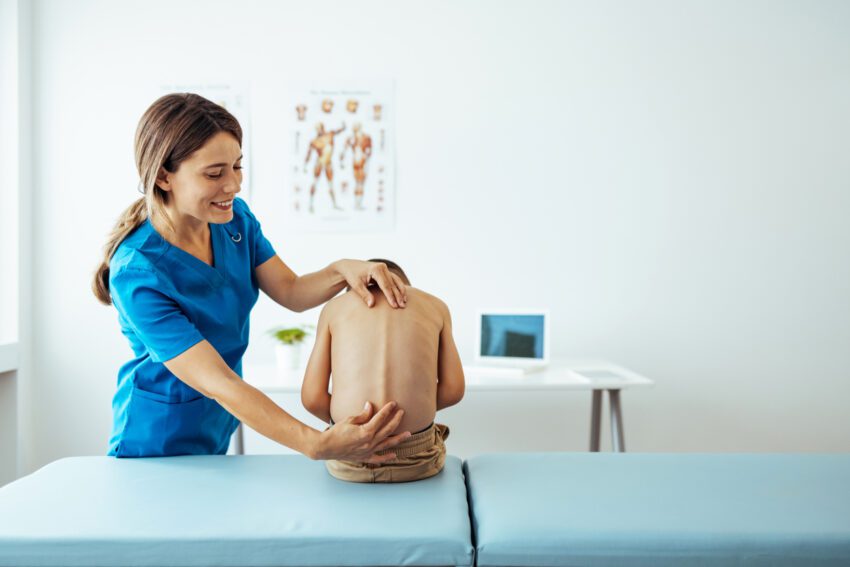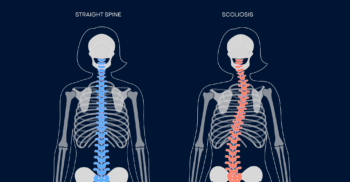Adolescent scoliosis is when a teenager’s spine curves sideways during their growth spurt before puberty. This curve can look like an “S” or a “C.”
Common Causes
The exact cause of adolescent scoliosis is often unknown, but it can be due to:
- Genetics: It can run in families.
- Neuromuscular conditions: Problems like cerebral palsy (a group of disorders that affect movement and muscle tone) or muscular dystrophy (a group of diseases that cause muscle weakness).
- Birth defects: When the spine doesn’t form properly before birth.
- Injuries or infections: Damage or infections of the spine.
Symptoms
- Uneven shoulders or hips.
- One shoulder blade sticks out more than the other.
- Rib cage appears more prominent on one side.
- Back pain, especially after sitting or standing for a long time.
- Fatigue due to muscle strain.
Diagnostic Tests
- Physical exam: The doctor checks for uneven shoulders, hips, and ribs.
- X-rays: Pictures of the spine to see the curve’s size and location.
- MRI or CT scan: Detailed images of the spine if more information is needed.
Treatment Options
Non-Surgical:
- Observation: Regular check-ups to see if the curve gets worse.
- Bracing: Wearing a brace to stop the curve from getting bigger.
- Physical therapy: Exercises to strengthen back muscles.
Surgical:
- Spinal fusion: A surgery where the curved bones are fused (joined) together to straighten the spine.
- Vertebral body tethering: Placement of screws and a tether along the outer spinal curve to guide the vertebrae into a straighter position during growth.
Common Conditions That Can Cause Similar Symptoms
- Kyphosis: An excessive outward curve of the spine, causing hunching.
- Lordosis: An excessive inward curve of the lower spine.
- Spinal tumors: Abnormal growths on or around the spine.
When to See the Doctor
- If you notice uneven shoulders or hips in your child.
- If your child complains of back pain or fatigue.
- If the spine looks more curved over time.
What to Ask the Doctor
- How severe is my child’s scoliosis?
- What treatment options are available?
- How will treatment affect my child’s daily activities?
- What are the risks and benefits of surgery?
- How often should we have follow-up visits?
Home Remedies for Mild Symptoms
- Exercise: Exercises can help strengthen back muscles.
- Stretching: Regular stretching and yoga can relieve muscle tension.
- Pain relief: Over-the-counter pain relievers like ibuprofen or acetaminophen can help with pain.
- Proper posture: Encourage good posture to reduce muscle strain.
Understanding adolescent scoliosis can help you know when to seek medical advice and what questions to ask your doctor. Early detection and treatment can prevent the condition from getting worse and help your child maintain a healthy, active lifestyle.

